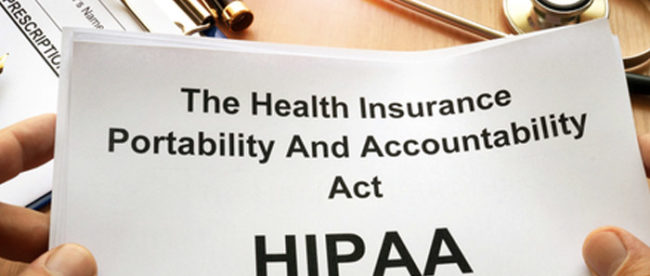The Ultimate Guide To Pacific Prime

This decrease of virtually 2 million in the variety of people 'without insurance (a decrease of around 4 percent) is absolutely a favorable change. With a softer economy in 2000 the latest reported gains in insurance policy protection might not continue (Fronstin, 2001) (international travel insurance). The decline in the number of uninsured will certainly not continue if the economic climate remains slow and health and wellness care expenses remain to exceed inflation
This is due to the fact that the data were gathered for a duration of solid economic performance. Of the estimated 42 million people that were uninsured, all but about 420,000 (regarding 1 percent) were under 65 years of age, the age at which most Americans become qualified for Medicare; 32 million were grownups in between ages 18 and 65, around 19 percent of all grownups in this age group; and 10 million were youngsters under 18 years old, about 13.9 percent of all kids (Mills, 2000).
These estimates of the number of persons without insurance are generated from the yearly March Supplement to the Current Populace Survey (CPS), performed by the Census Bureau. Unless or else noted, national estimates of people without medical insurance and proportions of the populace with various sort of coverage are based on the CPS, one of the most widely utilized source of price quotes of insurance protection and uninsurance rates.
The 2-Minute Rule for Pacific Prime

Still, the CPS is particularly valuable due to the fact that it creates yearly price quotes fairly promptly, reporting the previous year's insurance policy protection approximates each September, and due to the fact that it is the basis for a regular collection of estimates for greater than two decades, permitting for analysis of fads in coverage over time. For these reasons, along with the considerable use the CPS in other studies of insurance policy coverage that are presented in this record, we rely upon CPS estimates, with limitations kept in mind.

The estimate of the number of uninsured individuals expands when a population's insurance policy condition is tracked for numerous years. Over a three-year duration starting early in 1993, 72 million individuals, 29 percent of the united state population, were without insurance coverage for at least one month. Within a single year (1994 ), 53 million people experienced a minimum of a month without coverage (Bennefield, 1998a)
Six out of every ten uninsured grownups are themselves used. Although functioning does improve the likelihood that a person and one's relative will certainly have insurance coverage, it is not an assurance. Also participants of families with 2 full-time breadwinner have practically a one-in-ten possibility of being without insurance (9.1 percent without insurance price) (Hoffman and Pohl, 2000).
The Facts About Pacific Prime Uncovered
New immigrants represent a significant percentage of people without medical insurance. One analysis has actually attributed a significant portion of the current development in the size of the U.S. without insurance populace to immigrants who showed up in the country between 1994 and 1998 (Camarota and Edwards, 2000). Recent immigrants (those that pertained to the USA within the previous four years) do have a high price of being uninsured (46 percent), yet they and their kids represent simply 6 percent of those without insurance across the country (Holahan et al., 2001).
The partnership between medical insurance and accessibility to care is well established, as documented later in this phase. Although the connection in between wellness insurance coverage and health and wellness end results is neither direct nor straightforward, an extensive professional and wellness services study literary works links medical insurance coverage to improved accessibility to care, far better web link quality, and enhanced personal and population wellness condition.
Levels of evaluation for checking out the effects of uninsurance. It concentrates specifically on those without any health and wellness insurance for any type of length of time.
The Facts About Pacific Prime Revealed
The issues faced by the underinsured remain in some aspects comparable to those faced by the without insurance, although they are usually much less severe. international health insurance. Uninsurance and underinsurance, nonetheless, involve distinctly various policy issues, and the approaches for addressing them may differ. Throughout this research study and the five records to adhere to, the main focus is on persons with no wellness insurance and therefore no support in paying for healthcare past what is available through charity and safety and security web establishments
Medical insurance is a powerful aspect impacting invoice of care because both people and doctors respond to the out-of-pocket price of services - https://www.twitch.tv/pacificpr1me/about. Medical insurance, nevertheless, is neither required nor sufficient to get access to clinical services. The independent and straight result of wellness insurance policy protection on accessibility to health services is well established.
Others will certainly obtain the wellness care they require even without medical insurance, by paying for it out of pocket or seeking it from service providers who supply care free or at very subsidized rates. For still others, medical insurance alone does not ensure invoice of treatment since of other nonfinancial obstacles, such as a lack of healthcare carriers in their neighborhood, limited access to transportation, illiteracy, or etymological and cultural differences.
The 8-Minute Rule for Pacific Prime
Formal study about without insurance populaces in the United States dates to the late 1920s and early 1930s when the Board on the Price of Healthcare generated a collection of records about financing physician workplace gos to and hospital stays. This problem ended up being salient as the numbers of medically indigent climbed up during the Great Clinical depression.